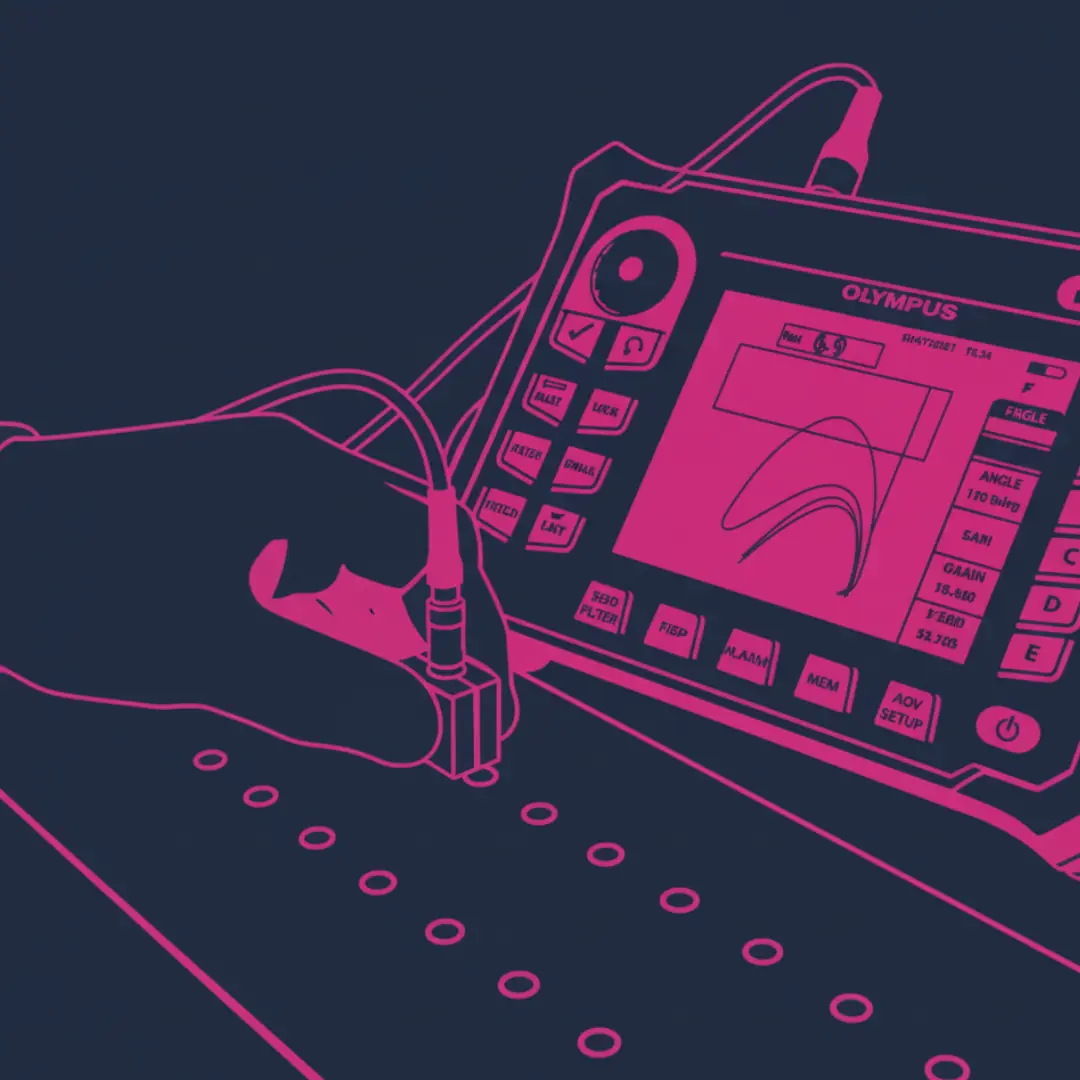Eddy Current Testing (ET) Jobs & Career Guide
Welcome to the career hub for Eddy Current Testing, a high-tech NDT method. Find the latest ET jobs, from trainee to Level III, explore salary data, and get a complete guide to this advanced inspection career.
Live Eddy Current Testing Job Openings
What is Eddy Current Testing?
Eddy Current Testing (ET) is a sophisticated Non-Destructive Testing method that works on the principles of electromagnetism. It is used to inspect conductive materials for surface and near-surface defects, as well as to measure material properties like conductivity and coating thickness.
The process involves placing a probe, which contains a coil of wire energized with an alternating current, near the surface of the part being tested. This current in the coil generates a changing magnetic field, which in turn induces small, circular electrical currents in the conductive material. These are known as “eddy currents.” These currents flow in a predictable pattern, but when a flaw like a crack or corrosion is present, it disrupts their flow. The ET instrument is designed to detect these subtle changes in the flow of the eddy currents, which are then displayed on a screen for a trained technician to interpret.
Beyond finding cracks, ET is also a powerful tool for rapidly sorting different metal alloys, verifying proper heat treatment, and measuring the thickness of non-conductive coatings on a conductive base.

Key Industries Relying on ET

inspecting aircraft skins for fatigue cracks, examining bolt holes, and assessing turbine blades and engine components.

inspecting non-ferromagnetic tubing and specific components

inspecting the thin-walled tubing found in heat exchangers, condensers, and steam generators for defects like pitting, corrosion, and cracking.

Applied for surface inspection of bars, tubes, and wires during the production process

Used in high-volume manufacturing for quality control, such as verifying the hardness of components, sorting alloys, and detecting cracks in engine and transmission parts.
The Eddy Current (ET) Career Path & Certifications
01
ET Trainee / Assistant
As a trainee, you will work under direct supervision to learn the complex theory behind ET. Your initial hands-on work will involve assisting with reference standard calibration and learning how to operate the equipment while accumulating the required on-the-job training (OJT) hours.


02
ET Level I Technician
After completing formal training (typically 40 hours) and OJT, you can certify as a Level I. A Level I is qualified to perform specific calibrations and tests according to a written procedure. They can follow a pre-determined setup to scan parts and identify signals, but work under the guidance of a Level II for signal interpretation.
03
ET Level II Technician
This is the core professional role. An ET Level II has the extensive knowledge to select the correct probe and instrument settings for a specific application. They are highly skilled in interpreting the complex signals on the instrument’s impedance plane display, distinguishing relevant flaw signals from non-relevant noise, and sentencing parts based on acceptance criteria.


04
ET Level III Technician
The top-level expert. An ET Level III develops and validates Eddy Current techniques and procedures for the company. They are capable of solving complex inspection problems, choosing the right technology for new applications, and are qualified to train and certify Level I and II personnel.
Eddy Current Testing Salary Expectations
| Certification Level | Experience Level | Average Salary Range (USD) |
|---|---|---|
| NDT Trainee | 0-1 Year | $42,000 – $58,000 |
| ET Level I | 1-2 Years | $55,000 – $70,000 |
| ET Level II | 2-5+ Years | $68,000 – $110,000+ |
| ET Level III | 5-10+ Years | $95,000 – $165,000+ |
*Disclaimer: Salaries can vary significantly based on location and industry (aerospace consistently pays a premium). Technicians with advanced qualifications like multi-array eddy current or tube inspection experience are in extremely high demand.
Level Up Your Career: Insights from Our NDT Blog
-
- October 6, 2025
- Career Growth
Cracking the Code: How to Specialize in Advanced...
In the world of Non-Destructive Testing (NDT), gaining your initial certifications is the ticket to a stable and rewarding career….
-
- October 6, 2025
- Career Growth
From NDT Technician to Supervisor: A 5-Year Career...
A career in Non-Destructive Testing (NDT) offers a direct path for growth, leading from a hands-on technician to a leadership…
-
- September 30, 2025
- Career Growth
Why Soft Skills Matter More Than You Think...
In the world of Non-Destructive Testing (NDT), technical expertise is king. Your certifications prove you can find flaws and interpret…
The path to Level II in ET is a significant commitment. It typically requires 80 hours of formal classroom training (40 for Level I and 40 for Level II) and a total of 630 hours of documented on-the-job experience to be eligible for the Level II exams.
ET can only be used on conductive materials. This includes most metals, such as aluminum, steel, stainless steel, copper, and titanium. It cannot be used on non-conductive materials like plastics or ceramics.
While both can find surface cracks in some of the same materials (steel), they work on different principles. ET works on conductive materials by analyzing disruptions in electrical currents. MT works only on ferromagnetic materials by analyzing disruptions in a magnetic field.
The impedance plane is the screen display on an Eddy Current instrument. It’s a graph that shows the electrical properties of the testing coil. A skilled Level II technician can interpret the shape, phase angle, and amplitude of the signals on this plane to determine the type and severity of a defect.

